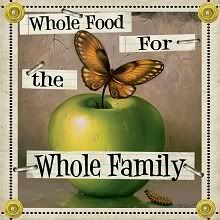
Most of us when you hear the word "Whole Grain" think of whole wheat. The truth is, whole grain is so much more than wheat but in America, that is usually as far as it goes. Unfortunately, wheat is hard to digest for many people and is becoming more and more of an allergen. There are so many more wonderful grains out there that are so packed with nutrition. I have blogged about a few of them but I want to share a few of my favorites with you. Having these on hand makes it real easy to add a scoop here or there to your wheat as you grind it. It is great for variety and for nutrition. It adds a new taste to your bread and breakfast dishes and is a great alternative for those sensitive to wheat. Here is a look at my top 6.
Millet: One of the only alkaline grains. When your body is sick, it is a sign that your body is too acidic. Millet will help in the process of rebuilding your cells. It is very easy to digest and is one of the most completely balanced of all grains. It is rich in vitamins and minerals, lecithin and amino acids. It is great also cooked like rice and served with a little honey, especially when you are sick. It has a very mild taste so can be used in many dishes and breads.
Quinoa: Of all grains, quinoa is the most nutritious. It has a very high level of lysine, an amino acid deficient in many other grains. Quinoa can help protect us from our radioactive environment. It is used as a medicine in the Andes and is a high endurance food. It is also to cook up and use in salads and soups.
Spelt: This grain is high in gluten so it can be exchanged completely for wheat. It is more easily digested than wheat and is 60% higher in protein than wheat. It is high in B vitamins, iron, potassium , magnesium and fiber. I am not sure why, but using spelt flour for waffles makes them twice as fluffy!
Kamut: This is a high energy grain valued by athletes. It can also be used interchangeably with wheat. It has 30% more protein than wheat and rich in Vitamin E.
Amaranth: Contains high quality protein, fiber, iron and vitamin C. A very small grain with a bit of a strong taste so use lightly.
Teff: This grain makes up 2/3 of the diet in Ethiopia. It is high in calcium, phosphorus, iron and thiamine. Even those who have so little food in Ethiopia are usually very rarely anemic because of the iron content.
Grains can be found in bulk bins at sprouts and other health stores but I like to buy mine from Azure Standard, Bulk Grains or Preparing Wisely.
Pick a grain and try something new!


















6 comments:
Thanks for this post! I have been using millet and quinoa for a while, but want to switch things up. Now I know which ones to try! THANKS THANKS THANKS!
Loved the info. Thanks
I'm going shopping but WHERE??!!! THANKS again Shari...glad I found your blog...it's never too late to learn new things!!!
I was inspired to check your blog today....I feel like the only grain we have been eating lately is whole wheat. I have been trying to think of other alternatives. Thank you for this post (and of course, all your other posts too!)
Teresa Smith
Thanks for the info! Did you go to Pizza Fusion today? I forgot to remind my sister, but I am sure she is there!
I saw that barley is really inexpensive. Do you know how nutritious it is?
Post a Comment